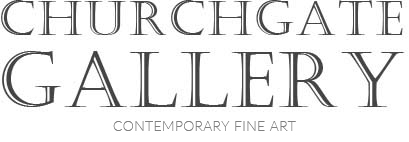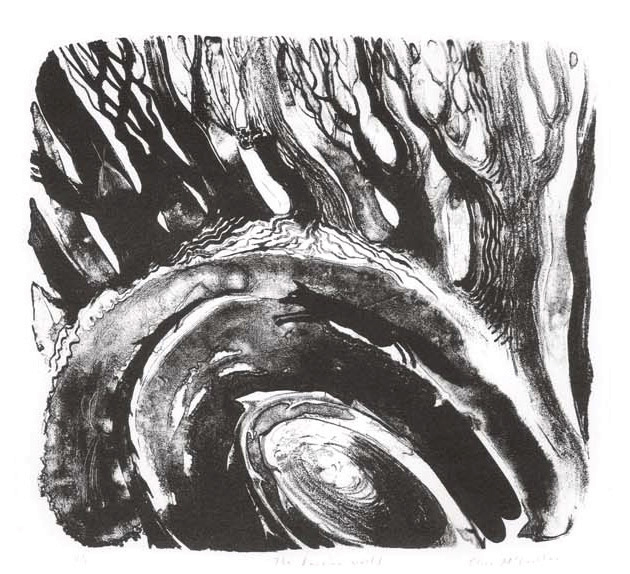With so many different techniques, the terminology around printmaking can be confusing for anyone who isn’t a printmaker! That’s why we’ve put together this glossary of terms to help you when choosing an original print to add to your collection.
WHAT IS AN ORIGINAL PRINT?
An original print is not a reproduction; it is a print that is manually created by the artist on a plate, block, or screen. The process involves printing onto paper, and because it’s a hand-printed method, no two prints are completely identical. Small variations naturally occur.
LIMITED EDITIONS AND ARTISTS PROOFS
A limited edition means the artist has decided on a specific number of prints to be made from a plate or screen. The number can vary greatly, depending on the artist’s choice and the printing method. Some methods, like etching, create more durable plates and allow for larger editions, while others, like collagraphs, are more delicate or made from perishable materials. The size of the edition can also affect the price of the print.
Limited editions make original prints collectible, something reproduction prints may not offer. Artists usually sign and number their prints (e.g., 2/50), indicating the specific print number and the total number of prints in the edition.
Along with the limited edition, artists may also produce Artist’s Proofs (usually up to 10% of the edition size). These proofs may be extra copies kept by the artist, proof copies of the plate at an unfinished stage, or prints with variations (e.g., different ink colours).

MONOPRINT / MONOTYPE
Monoprinting is a simple yet incredibly versatile technique which involves the artist applying ink or paint directly to the ‘plate’ (which can be made from any smooth flat material, such as plastic, glass or metal). The paper is then applied to the plate, and either manually pressed down or put through an press to transfer the ink to the paper. The artist may only print onto the paper once, or print multiple times to create a complex, layered image. They may also use different colours of ink to create a painterly look.
Because the artist paints the image on to the plate, only one print can be made, meaning it is 1 of an edition of 1.
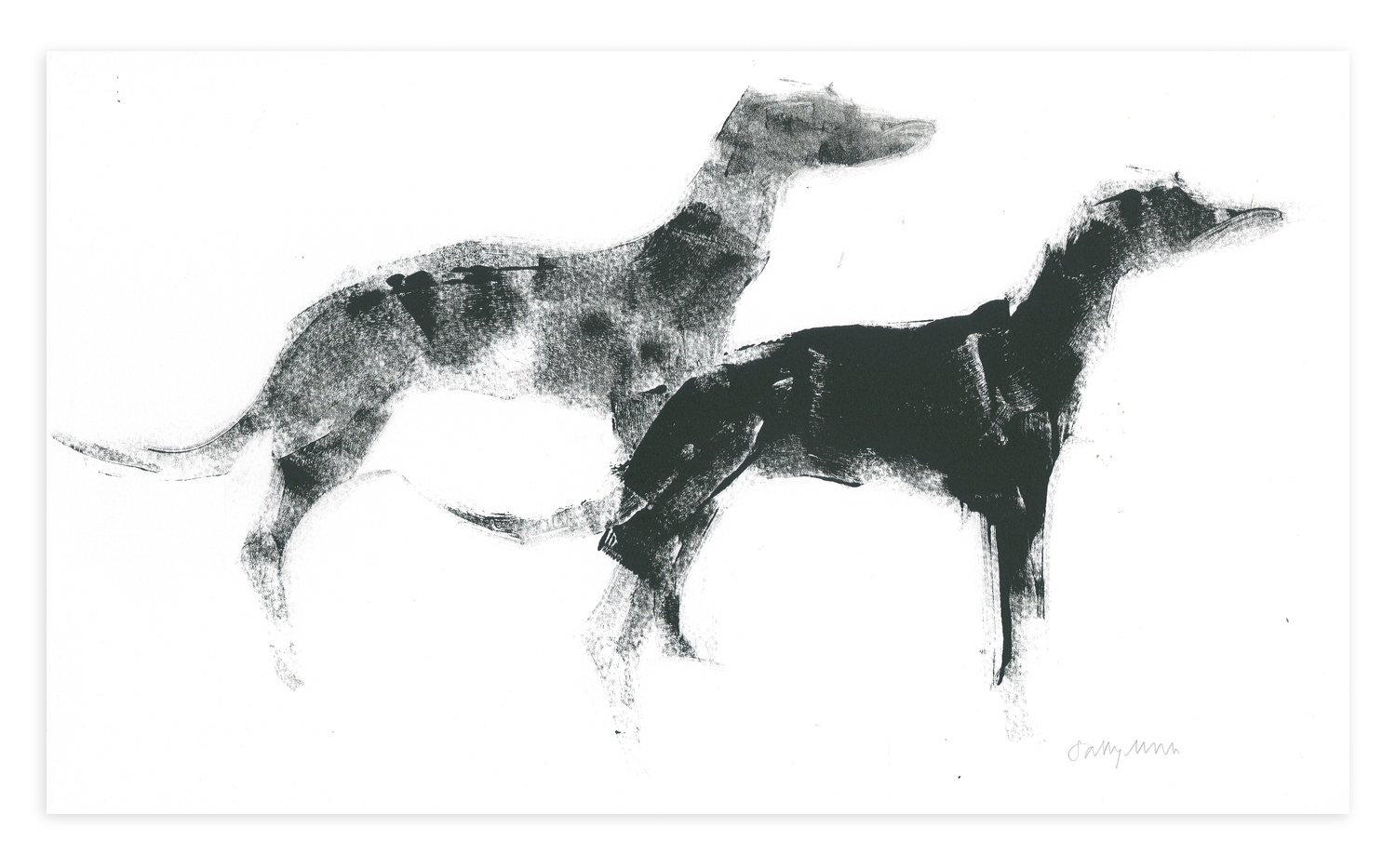
LINOCUT / WOODCUT
To create a linocut or woodcut print, the artist carves their image into a piece of lino or wood, leaving raised areas that will take ink. The inked block can be printed either by hand or with a press. This technique is particularly suited to making bold, graphic prints with flowing lines, but can also be used to make intricate prints with fine details.

ETCHING
Creating a etching involves a metal plate, which is covered with a layer of wax. The artist then draws on the plate by scratching away this wax with a pointed etching needle. The plate is then dipped into a bath of acid, which dissolved the exposed areas of metal where the wax has been scratched away. The remaining wax is then removed from the plate, and ink is applied. The process of rubbing away the excess ink pushes it into the etched lines on the plate, and the plate is run through an etching press with paper to transfer the image. Even after printing, the plate can be re-covered in wax and etched again, making etching particularly suited to creating very finely detailed images. An example of this can be seen in Helen Fay’s work.
Etched plates are also durable, meaning they can be used to print large editions.

Etchings by Tim Southall, Ley Roberts and Helen Fay
AQUATINT
Aquatint is an etching technique used to create areas of tonal variation on the plate. Powdered resin is sprayed onto the plate and heated so it adheres evenly, creating a fine acid resistant coating. Once dipped into the acid bath, areas covered with less of the resin will have been more eroded and so will appear darker in the final print, and areas covered with more of the resin will have been less eroded and so will appear lighter in the final print. This allows the artist to create areas with a smooth gradient between light and dark. Ley Roberts uses this technique to great effect in her atmospheric etchings of landscapes.
ETCHING WITH AQUATINT
Etching and aquatint techniques can be used on the same plate, to create a finished artwork with both lines and areas of graduated light and shadow. Alternatively, two (or more) separate plates can be used to create an image with colour as well as black and white.
HAND-COLOURED ETCHINGS
A hand-coloured etching begins as a traditional etching, where an image is incised onto a metal plate, inked, and printed onto paper using a press. After the ink has dried, the artist adds colour to the print by hand using watercolours, gouache, coloured pencils, or other media.
Because each print is hand-painted individually, every piece in the edition is slightly different—making each one a unique work of art.

Hand coloured etching by Kit Boyd, etching with Aquatint by Hilary Adair
DRYPOINT / ENGRAVING
In drypoint, the artist scratches the image directly into a metal plate, without the use of acid. The ink collects in the scratched lines and the raised edges (called “burrs”), creating softer lines than etchings. However, because the burrs wear away with repeated prints, drypoint is typically suited for smaller editions.

Drypoints by Kate Boxer and John Douglas Piper, engraving by Brian Hanscomb
CHINE COLLÉ
Chine collé is a process where an etching or drypoint plate is printed onto a thin paper pasted on top of a thicker paper. The thinner paper is adhered to the thicker support during the printing process. This technique allows the artist to use paper that would ordinarily be too thin or fragile for printmaking, such as japanese paper, tissue paper or papers made from unusual fibres. These papers can offer finer results than traditional heavy printmaking paper, drawing more detail off the plate. The technique can also be used to create a background colour, or to colour a specific part of the print.

Drypoint and Chine collé prints by Tanya Morel
PHOTOGRAVURE
Photogravure is a photographic printmaking technique where a metal plate is coated with light-sensitive gelatin tissue, exposed to a film positive, and then etched in acid. The plate is inked and run through a press to transfer the image. This method is particularly useful for accurately reproducing the tonal variations found in a photograph.
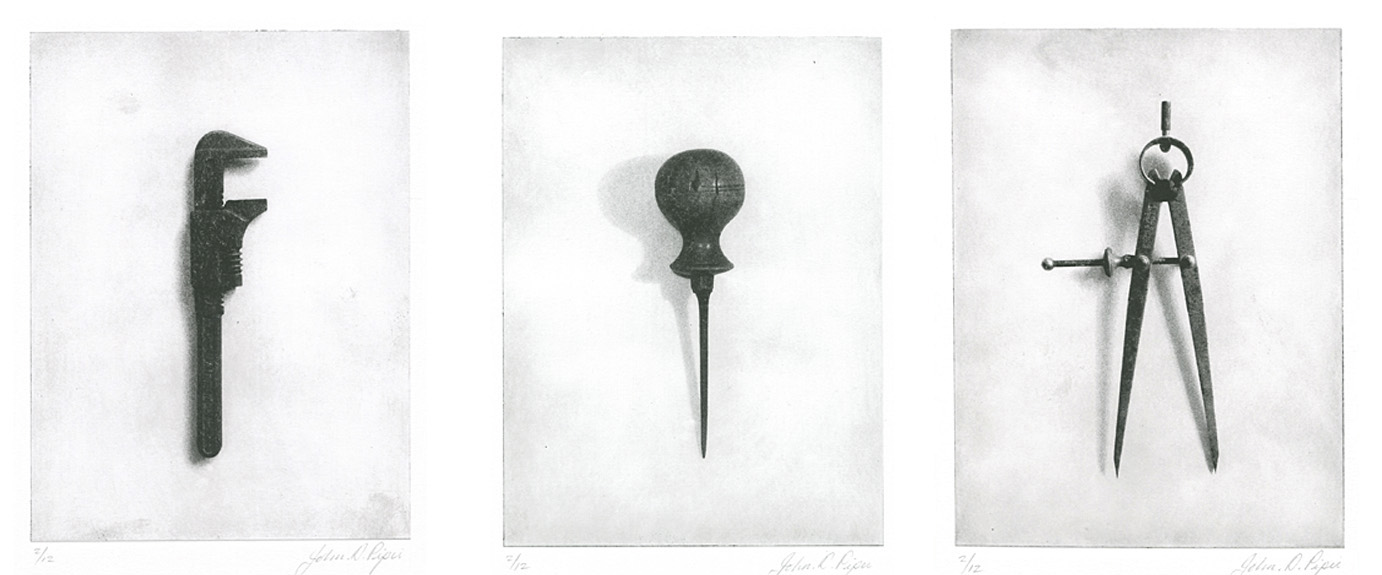
Wrench, Scratcher Awl and Dividers from the series ‘Portrait of my Father by John Douglas Piper
SCREENPRINT
Screenprinting uses a mesh screen (often referred to as a “silkscreen”) as a stencil for printing onto paper or fabric. The artist blocks off areas of the screen, either manually or using a light-sensitive emulsion, to control where ink is pushed through. This technique is great for bold images, single colors, or more complex multi-colored designs.
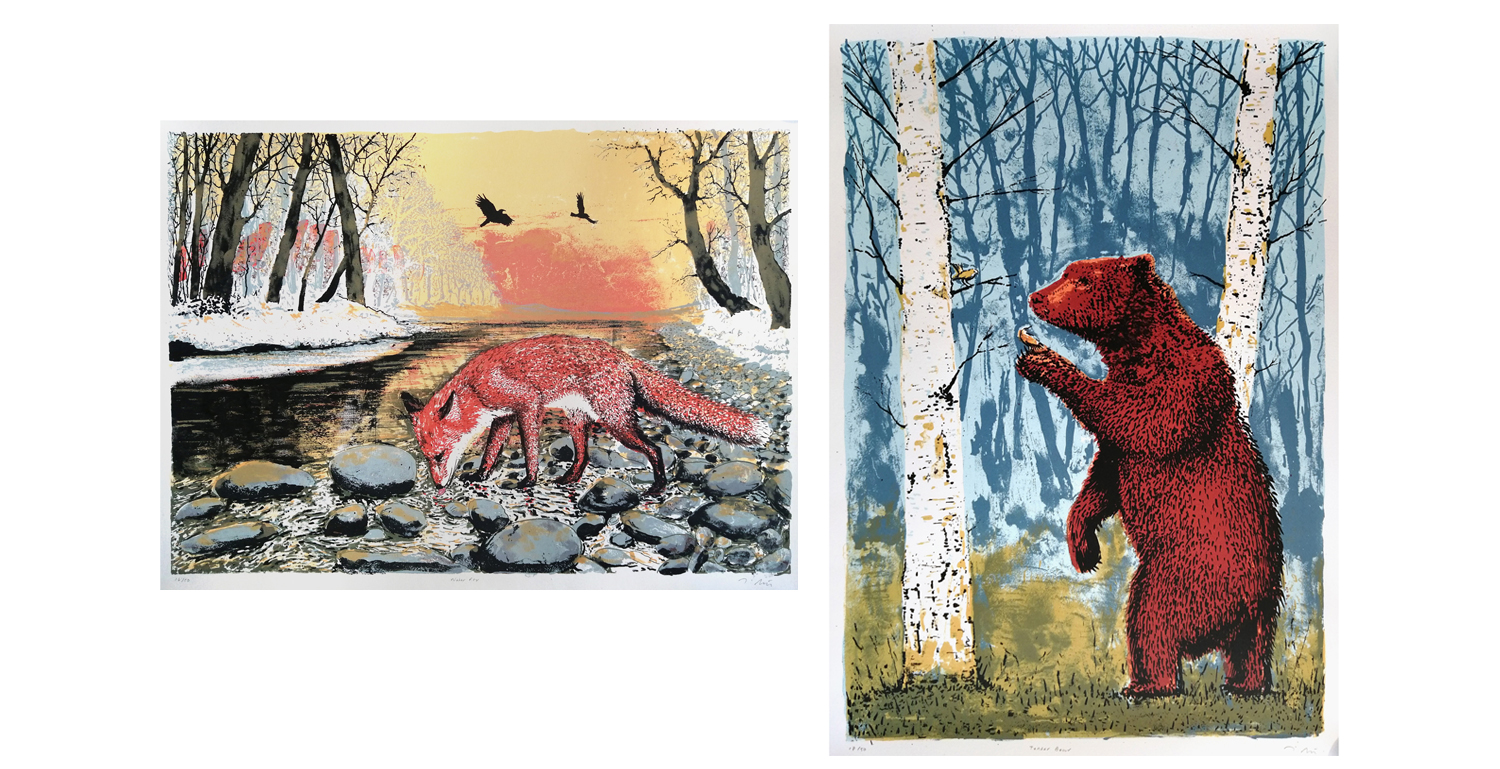
Screenprints by Tim Southall
LITHOGRAPH
Lithography works on the principal that oil and water repel each other. The artist draws directly onto a limestone block with a greasy substance, such as special wax crayons or paints made for lithography. The slightly porus surface of the limestone absorbs this greasy substance and holds it. The stone is then moistened with water, and oil based ink is rolled onto the stone. The water acts as a barrier to the ink, allowing it to be wiped off, with the ink only remaining on the greasy areas where the artist drew their original image. The Image can then be transferred to paper in a printing press.
Lithography can also be adapted to high volume reproduction printing using aluminum, polyester, or paper printing plates are used instead of stone tablets.
COLLAGRAPH
In collagraphy, the artist creates a highly textured plate by applying materials like collage elements, acrylic mediums, and even carborundum (a gritty substance). The plate can then be inked and printed onto paper either by hand or using a press. This technique is highly versatile, allowing artists to create a wide range of textures and effects.
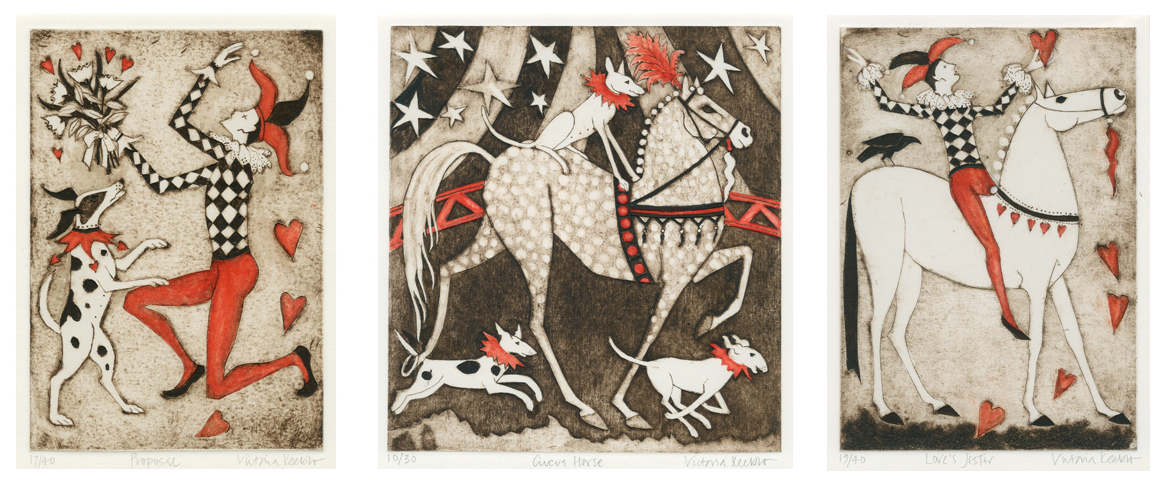
Collagraphs by Victoria Keeble
COLLECTING ORIGINAL PRINTS
Original prints are a fantastic way to start building your art collection. They’re one-of-a-kind pieces, often more affordable than original paintings. You can explore our collection of original prints both online and at our Porlock Gallery, where we always have a selection of prints on display.
We also offer Own Art, an Arts Council-supported scheme that allows you to purchase original prints by spreading the cost interest-free over 10 monthly payments.
